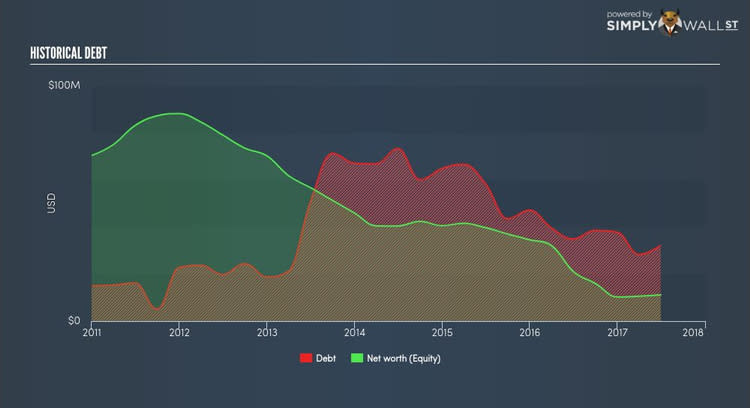Is China Advanced Construction Materials Group Inc’s (CADC) Balance Sheet Strong Enough To Weather A Storm?

China Advanced Construction Materials Group Inc (NASDAQ:CADC) is a small-cap stock with a market capitalization of USD $4.06M. While investors primarily focus on the growth potential and competitive landscape of the small-cap companies, they end up ignoring a key aspect, which could be the biggest threat to its existence: its financial health. Why is it important? A major downturn in the energy industry has resulted in over 150 companies going bankrupt and has put more than 100 on the verge of a collapse, primarily due to excessive debt. Here are few basic financial health checks to judge whether a company fits the bill or there is an additional risk which you should consider before taking the plunge. View our latest analysis for China Advanced Construction Materials Group
How does CADC’s operating cash flow stack up against its debt?
There are many headwinds that come unannounced, such as natural disasters and political turmoil, which can challenge a small business and its ability to adapt and recover. These catastrophes does not mean the company can stop servicing its debt obligations. Fortunately, we can test the company’s capacity to pay back its debtholders without summoning any catastrophes by looking at how much cash it generates from its current operations. CADC’s recent operating cash flow was 0.05 times its debt within the past year. This means what CADC can generate on an annual basis only covers less than a tenth of what it actually owes its debtors in the near term, which raises a red flag.
Can CADC meet its short-term obligations with the cash in hand?
In addition to debtholders, a company must be able to pay its bills and salaries to keep the business running. During times of unfavourable events, CADC could be required to liquidate some of its assets to meet these upcoming payments, as cash flow from operations is hindered. We should examine if the company’s cash and short-term investment levels match its current liabilities. Our analysis shows that CADC is able to meet its upcoming commitments with its cash and other short-term assets, which lessens our concerns for the company’s business operations should any unfavourable circumstances arise.
Does CADC face the risk of succumbing to its debt-load?
Debt-to-equity ratio tells us how much of the asset debtors could claim if the company went out of business. CADC’s debt-to-equity ratio exceeds 100%, which indicates that the company is holding a high level of debt relative to its net worth. In the event of financial turmoil, the company may experience difficulty meeting interest and other debt obligations.
Next Steps:
Are you a shareholder? CADC’s debt and cash flow levels indicate room for improvement. Its cash flow coverage of less than a quarter of debt means that operating efficiency could be an issue. Though, its high liquidity means the company should continue to operate smoothly in the case of adverse events. Given that its financial position may be different. I recommend researching market expectations for CADC’s future growth on our free analysis platform.
Are you a potential investor? With a high level of debt on its balance sheet, CADC could still be in a financially strong position if its cash flow also stacked up. However, this isn’t the case, and there’s room for CADC to increase its operational efficiency. Though, the company will be able to pay all of its upcoming liabilities from its current short-term assets. You should continue your analysis by taking a look at CADC’s past performance analysis on our free platform to conclude on CADC’s financial health.
To help readers see pass the short term volatility of the financial market, we aim to bring you a long-term focused research analysis purely driven by fundamental data. Note that our analysis does not factor in the latest price sensitive company announcements.
The author is an independent contributor and at the time of publication had no position in the stocks mentioned.

